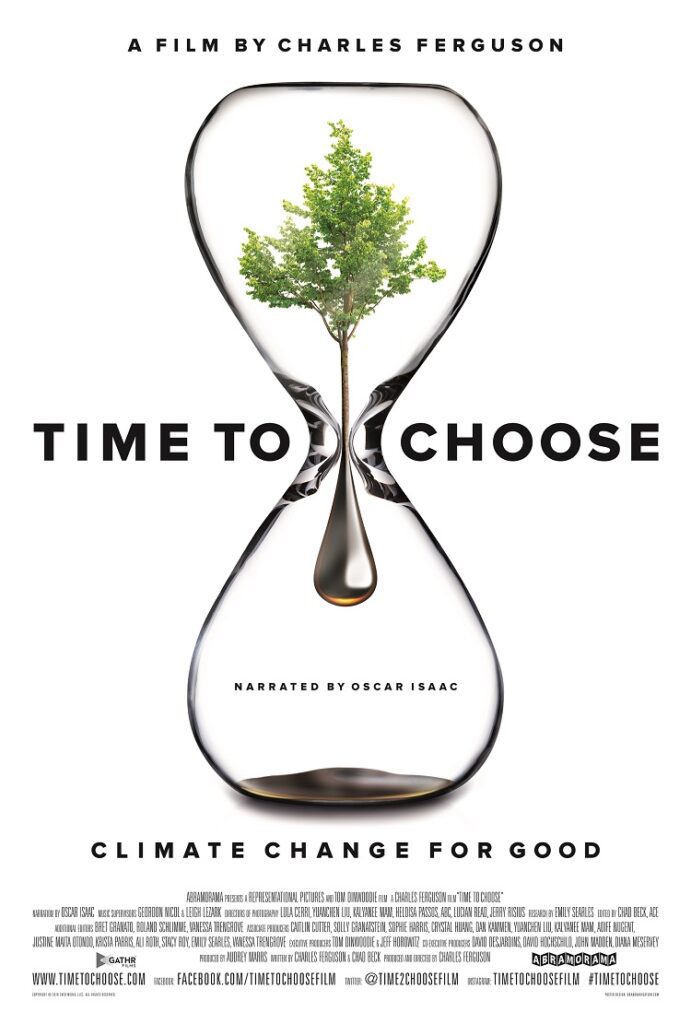
Written by Kristen Lopez
A decade has passed since Al Gore reported to us about climate change, and won an Academy Award, with An Inconvenient Truth. Since then cars have become more gas efficient (or entirely electric) and not a day goes by that articles about food consumption or drought pop up to remind us of the real effects of climate change. Documentarian Charles Ferguson’s Time to Choose espouses the same rhetoric as the Gore doc, but with added scrutiny towards individual pollutants destroying our world.
Opening by documenting Earth’s majesty, those who enjoyed the BBC’s Planet Earth series might experience some deja vu. Initiating things by showing us how lovely the Earth is has been done before, but Ferguson uses this images if only to contrast them with the devastation continually done by coal mining, mountain top deforestation and oil spills. Verdant hills stripped of greenery look more like the cratered surface of the moon than anything we should be seeing in our own backyard.
Time to Choose preaches to the converted – those who are already interested in driving electric cars or flirting with vegetarianism – so there’s little that isn’t already known to the doc’s primary audience. The message remains the same as what Gore described – the world’s pollution is becoming untenable and human intervention is the only way to stop it. Just its reason for existing is important, but it’s doubtful anyone not already convinced will change their mind.
Divided into three sections – looking at coal, oil, and livestock – Time to Choose works best when it settles on a prime target and explores issues that might be overlooked in typical climate change features.
The first section on coal mining and deforestation is the most fascinating, with evocative imagery that will remain in your head. A look at a small town in Appalachia, where over 312 “sludge dams” of oil continually poison residents by seeping into the groundwater, moves these dense topics out of the laboratory and into the heartland. Moving events to China, the film looks at the hazard of coal mining, a booming industry there, which has led to air so toxic that just breathing it takes five years off the average resident’s life. These moments work individually in a Dateline way – informing the audience of horrific things going on right under our nose in the name of commerce.
Later segments, particularly those looking at gasoline and car changes, can tend to feel like advertisements, especially for the Tesla. Considering those watching the documentary will be more than well-versed in electric cars, there’s absolutely nothing of substance to be gleaned. The latter section looking at livestock and the overabundance of crops grown purely to feed livestock is fascinating on the surface, but can tend to play out like an advertisement for organic food which, as someone with a local market nearby, fails to properly explain why the average household fails to buy organic due to high costs.
Time to Choose’s biggest asset is its narrator: Oscar Isaac. Though audiences probably won’t immediately recognize his voice – and the opening credits don’t arrive till thirty minutes in as to hook the audience – his name recognition alone will help the film find an audience, possibly one further afield than the typical person interested in preventing climate change.
Climate change is real, and though Time to Choose won’t attract the naysayers it’s another compelling look at how little has changed since Al Gore brought the subject to a mass audience. Time to Choose is a well-drawn out, methodical look at a topic discussed on social media daily, and though what it’s talking about isn’t unique, the beautiful imagery and verbose talking heads keep things compelling.